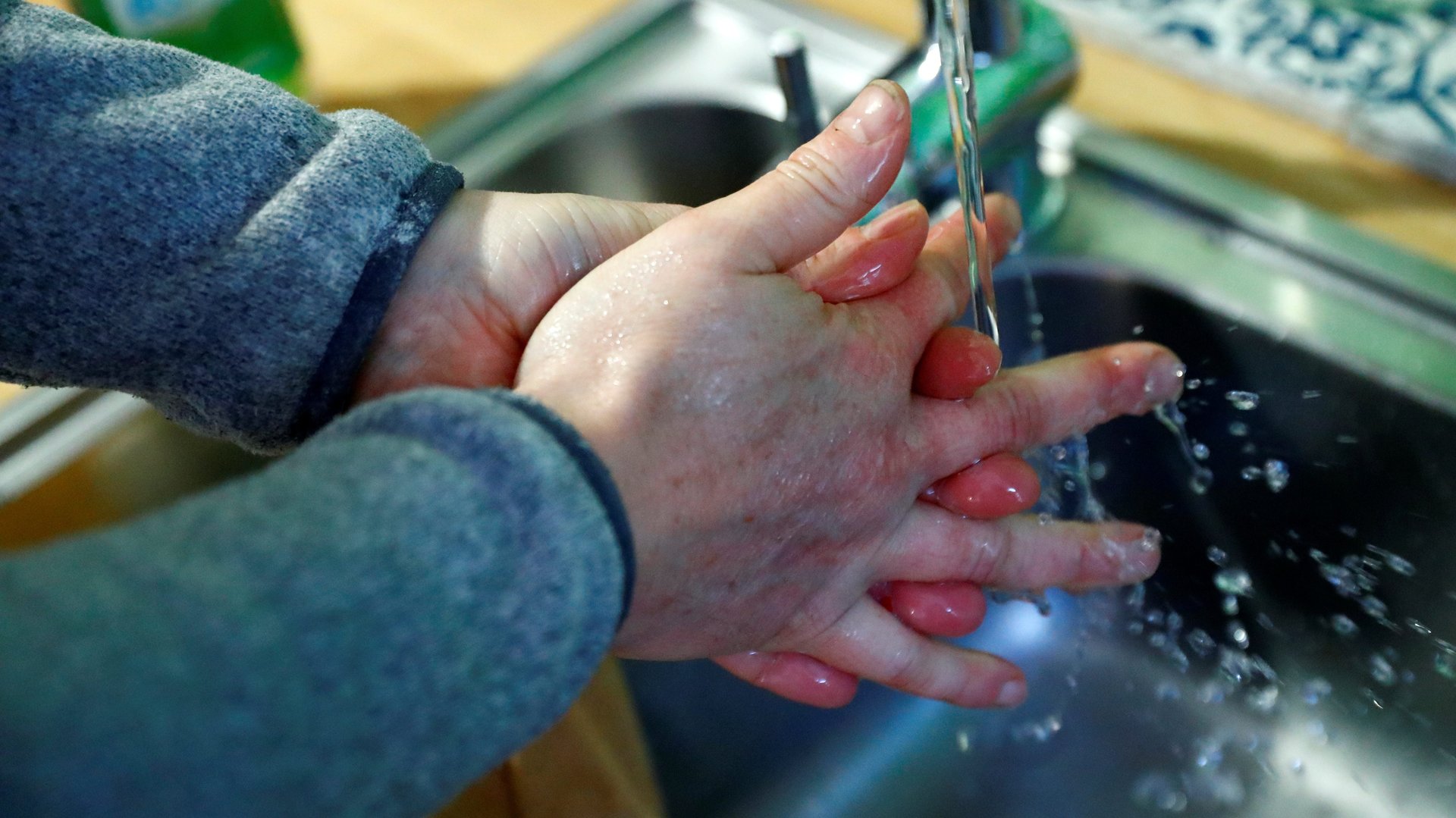Millions of people can’t wash their hands for 20 seconds—for lack of water
For all the uncertainty that characterizes the global Covid-19 pandemic, the most common directions for protecting ourselves from catching and spreading it have remained the same from the beginning: Avoid unnecessary contact with others, and wash your hands often with soap and water, for at least 20 seconds.


For all the uncertainty that characterizes the global Covid-19 pandemic, the most common directions for protecting ourselves from catching and spreading it have remained the same from the beginning: Avoid unnecessary contact with others, and wash your hands often with soap and water, for at least 20 seconds.
But often, following these simple directives is simply not an option for the 780 million people around the world who don’t have access to an “improved water source.”
There’s virtually no plan in place for asylum seekers or the millions living in refugee camps concentrated in Europe and the Middle East who lack running water and other basic resources, much less space to practice the social distancing needed to curb the pandemic. Homeless shelters often don’t have a reliable water source. West African countries ravaged by Ebola in 2014 have a tentative plan to set up communal water stations for places that lack plumbing, but that counteracts social distancing. So far, cases in Africa have been comparatively low, but the risk of more is there, and official numbers may be unreliable.
First-nation risks
An example of those living without adequate access to water is found, perhaps surprisingly to many, in the United States: the approximately 300,000 people who belong to the Navajo Nation. In the US southwest, where most Navajo live on reservations, Covid-19 cases have recently spiked. Mining has destroyed vital infrastructure for years, including irrigation and plumbing, which means not only no running water for around 40% of households, but also environmentally created illnesses and diseases that leave them more vulnerable to the new coronavirus than most communities.
Overall, Native Americans and Alaskan Natives have the highest rate of preexisting illnesses—including diabetes and tuberculosis—in the US, making them especially susceptible to Covid-19.
Some people are finding hope in the fact that the recent $2 trillion stimulus bill allocates $8 billion to tribal governments to help fight the pandemic. But for now, as states grapple with ever more cases, overloaded hospitals, and a scarcity of supplies and health workers, getting clean water to people living on reservations has mostly been in the hands of nonprofit organizations and local volunteers.